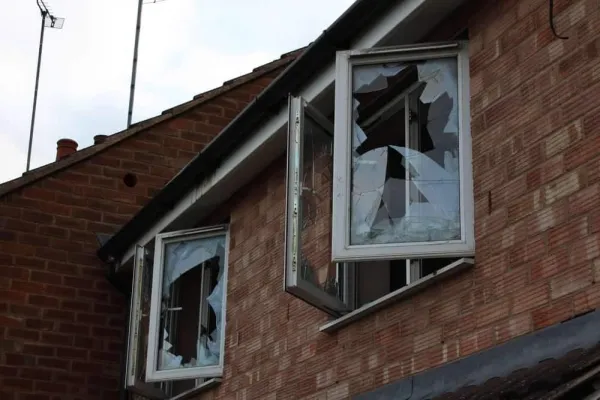With energy bills rising in the UK, many households are looking for cost-effective ways to stay warm during the cold winter. Electric blankets have grown in popularity due to their energy efficiency and affordability compared to constantly running central heating. But are electric blankets indeed a more budget-friendly heating option than central heating?
In the article below, we’ve explored electric blankets, how effectively they work, and whether they’re a more cost-effective option compared to central heating. By the end, you should have all the information you need to decide if investing in an electric blanket (or two) is the right option for you.
What is an electric blanket?
An electric blanket has integrated wiring that allows it to be heated by running an electric current through the wires.
The wires are fragile and woven into the fabric, providing an even distribution of heat across the entire surface area of the blanket. Electric blankets typically have controllers that allow users to adjust the heat settings to high, low, or off. Many electric blankets have safety features such as automatic shutoff after a certain period and overheat protection and are designed to be used safely throughout the night.
The benefits of electric blankets
Electric blankets provide portable, consistent, and even heat without warming rooms. You can use them on beds, sofas, and even dining room chairs to keep cosy during meals. Most modern electric blankets use minimal electricity, with costs ranging from just 1-4p per hour used.
What are electric blankets made of?
The integrated wires are made from materials like carbon fibre that heat up quickly and evenly when electrified. The wiring is insulated and reinforced to prevent hot spots or circuit breaks. The blankets are made from soft, flexible fabrics like polyester fleece, micro plush, sherpa, or chenille.
Higher-end electric blankets may be made from natural materials like wool. The blanket’s fabric helps hold in the warmth created by the internal heating wires.
What size do electric blankets come in?
Electric blankets come in all standard bed sizes, from single to super king. There are even electric throws or lap blankets designed for use on sofas and armchairs. Some blankets have elasticated edges to fit neatly and prevent heat loss. The controllers come in different styles, from essential dials to digital displays and timers. More advanced controllers allow users to pre-heat the blanket, so the bed is nice and toasty when getting in.
How much do electric blankets cost upfront?
Electric blankets have become quite affordable, especially compared to purchasing and installing an entire central heating system. Prices range from £20-£50 for a single electric blanket, £30-£60 for a double, and £40-£80 for a king or super king.
More advanced electric blankets with features like a pre-heat function, multiple heat settings, and higher-end materials like faux fur or plush fleece will be at the higher end. However, even rudimentary electric blankets typically cost less than £50 for a double.
Where to buy?
Electric blankets can be purchased from most major retailers in stores and online. Many retailers run promotions on electric blankets in the summer due to lower demand and during the autumn and winter months leading up to Christmas as households prepare for colder weather. Keep an eye out for sales, bundles, and coupon codes when shopping for an electric blanket to maximise savings on the initial purchase cost.
Average central heating costs in the UK
Central heating provides whole-home warmth by distributing hot air or water through a building’s ductwork and radiators. Homes with mains gas central heating tend to have lower bills while heating oil, LPG, and electric central heating are more expensive.
According to Uswitch, the average UK household spent approximately £71 per month on gas and £64 per month on electricity in 2023 without including standing charges. These costs can fluctuate yearly depending on weather patterns and changes to the price cap on energy.
In addition to higher monthly expenditure, installing a new central heating system can cost thousands of pounds upfront. This includes the boiler or heat pump unit, radiators and piping, thermostat, labour costs, and upgrading to meet modern efficiency standards. With new equipment, yearly central heating costs would be lower, but the high initial investment makes this unattainable for many.
How much do electric blankets cost ongoing?
One of the most reassuring aspects of electric blankets is their affordability. The operating costs will vary depending on the blanket’s power rating and usage. However, the average electric blanket only costs between 1 and 4p per hour of use, making it a pocket-friendly heating option that can significantly reduce your energy bills.
Electric blankets vs central heating costs
This is drastically lower than any central heating. For example, an efficient modern gas boiler costs approximately 4-5p per hour to run. Electric heating can cost 20-35p per hour, depending on the system’s efficiency—oil and LPG heating costs even more per hour. However, it’s important to note that gas central heating produces more carbon emissions compared to electric blankets, making the latter a more environmentally friendly option.
Calculate the hourly cost of an electric blanket
To determine the exact hourly cost, locate the electric blanket’s power rating (typically 100-200 watts) and multiply it by the price of one kWh of electricity—currently, 1 kWh costs approximately 24p for the average variable tariff.
So, for a 100W electric blanket running for one hour, the calculation would be:
100W x 1 hour = 0.1kWh
0.1kWh x £0.24 per kWh = £0.024 or 2.4p
Used daily during the coldest months, an electric blanket may add between £10 and £20 to an annual energy bill. That’s just a fraction of what central heating costs the average household.
Are electric blankets more cost-effective than central heating?
Electric blankets are undoubtedly a more budget-friendly heating option compared to central heating when considering up-front costs, ongoing energy use, and overall convenience. This reassurance should give you confidence in exploring this cost-effective heating solution that can help you save significantly on your energy bills.
This reassurance should give you confidence in exploring this cost-effective heating solution.
Cost-effective heating
An electric blanket can provide cheaper, targeted warmth during the day for those looking to reduce their home energy costs. The thermostat can be turned down at night, and an electric blanket can be used instead of cranking the central heating. This uses far less energy than heating empty rooms or constantly reheating all night.
Flexibility
Electric blankets offer a level of flexibility that central heating systems simply can’t match. You can quickly move them around the home and take them on camping or caravan trips. There are no expensive installation or maintenance fees, either. This flexibility empowers you to manage your heating needs efficiently and cost-effectively, giving you control over your comfort and energy usage.
Reduce central heating
While electric blankets cannot replace central heating in extreme cold, they serve as an affordable complement. They allow the central heating to be turned down without sacrificing comfort. However, it’s important to note that electric blankets are not designed to heat entire rooms and are most effective when used for personal heating. For many UK households, investing in an electric blanket is a smart first step in reducing winter energy bills.
Advantages of getting an electric blanket
There are low upfront costs of £20-£80 for an electric blanket, compared to thousands for central heating, and they are very cheap to operate (typically 1-4p per hour used).
Electric blankets also provide direct, targeted warmth without heating empty rooms. They are portable and versatile, as they can be used in any room or on any piece of furniture.
You can get them in various sizes, heat settings, and fabric types to suit your preferences. They are also safer than old-fashioned hot water bottles with auto shutoff features.
Disadvantages of getting an electric blanket
Electric blankets cannot entirely replace central heating on frigid days, and they also require storage (the amount depending on the size) during warmer months of the year.
Cords and controllers can make changing bed linens slightly tricky and are also unsuitable for babies, pets, or unattended use.
Lastly, budget models may not be able to adjust to higher-end options.
If you’d like support with selling probate property, click on the link.
















